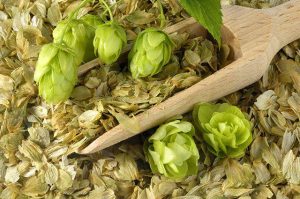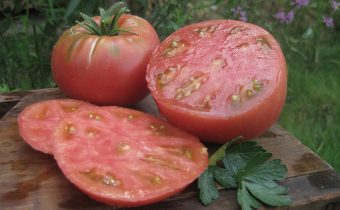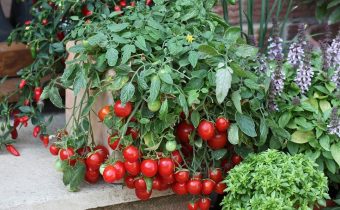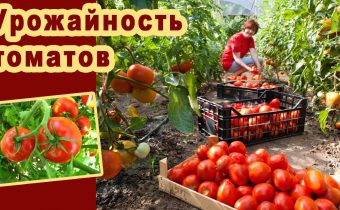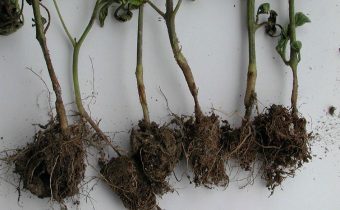Yeast dressing for tomatoes, how to dilute and apply

What is fertilized in the old beds with tomatoes? Some gardeners insisted mowed grass in the water, the second buried humus in the ground, and still others knew exactly how to prepare an effective top dressing for tomatoes from yeast. The last ancient method was revived in the 70s of the last century and became extremely popular. Not surprising. Such a fertilizer is not only environmentally friendly, but also effective: seedlings grow faster and the crop ripens earlier.
Yeast Biological Properties
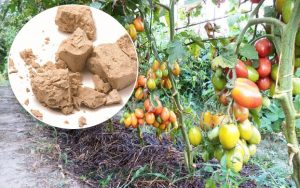 Unicellular fungi, which are yeasts, when used properly, have a beneficial effect on the growth of many garden crops.
Unicellular fungi, which are yeasts, when used properly, have a beneficial effect on the growth of many garden crops.
Microscopic spores are not fertilizer in the usual sense of the word. When released into the ground, they do not dissolve in it by microelements, but only stimulate the activity of microorganisms that live there. Being in a humid environment rich in organic matter, they begin to multiply and release substances that activate the development of the root system.
Due to the appearance of this element, seedlings gain access to a whole pantry of minerals: potassium and calcium, phosphorus and iron, magnesium and sodium. Here, in close proximity are vitamin C, choline and almost the entire group of vitamins B. Plus, an increased content of proteins and carbohydrates. So, briefly looks like the appearance of unicellular fungi in the garden.
However, this addition to the daily “menu” of roots requires certain conditions to be met:
- first, for the reproduction of such fungi, the earth must be rich in organic matter (for example, manure). Otherwise, the soil may become stony and unsuitable for growing plants;
- secondly, the mushrooms will not multiply in the cold. Warm temperature should be not only in the air, but also underground;
- thirdly, in the process of vital activity, the yeast absorbs potassium and calcium. This means that in places feeding these elements should be in sufficient quantities. In this case, wood ash will definitely help out.
The effect of the use of unicellular microorganisms is noticeable immediately on those beds where land crops grow: cucumbers, peppers and, of course, tomatoes.
Effect of yeast dressings on tomatoes
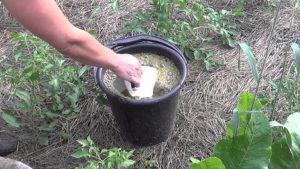 Tomatoes are in the top three of the plants, the most responsive to the top dressing, which contains yeast sticks.
Tomatoes are in the top three of the plants, the most responsive to the top dressing, which contains yeast sticks.
Practice proves that if the earth is fertilized with such an additive in advance, the seedlings adapt to the open space, without feeling any discomfort. Due to microelements, the number of which, when fertilized with fungi increases manyfold, rapid and active root growth begins.
The development of the underground part of the plant entails the growth of the above-ground crown: the number of processes on the main stem increases, which, in turn, also gains height.
The green mass of such tomatoes exceeds the volume of the specimens that did without fertilizer. As a result, the number of ovaries on the bush increases. Such plants successfully bear fruit in conditions of poor lighting or a sudden decrease in temperature.
Since yeast, falling into the soil, inhibit the growth of pathogenic bacteria, seedlings are less susceptible to infection by diseases. Like other crops that interact with such additives, the bushes in the fall produce an environmentally friendly crop of tomatoes.
Methods for making yeast feeds
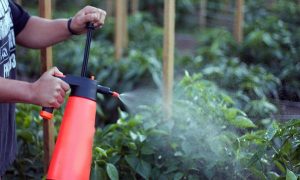 A solution of unicellular fungi can be sprayed onto the foliage and stem of a plant, or it can be watered under the root. Each method has its own goals and objectives, which should be determined before the beds with tomatoes begin to be fertilized.
A solution of unicellular fungi can be sprayed onto the foliage and stem of a plant, or it can be watered under the root. Each method has its own goals and objectives, which should be determined before the beds with tomatoes begin to be fertilized.
Foliar top dressing
Spraying of the fermented solution on the shoots is used mainly for the prevention of harmful insects and diseases.
Important!
Spraying tomatoes with a liquid mixture of fungi is effective when the temperature on the soil is not lower than 15 degrees.
Usually, irrigation of beds with these vegetables is carried out at the first signs of defeat by powdery mildew and blight. Spray mix is diluted in water at the rate of 1 part yeast starter to 2.5 parts warm water.
Root watering
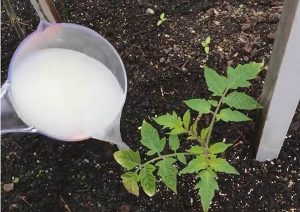 Watering under the base of the plant ensures saturation of the root space with useful elements in a short time. With the already started damage to the leaves, such as powdery mildew, this method of fertilizer will not be particularly effective.
Watering under the base of the plant ensures saturation of the root space with useful elements in a short time. With the already started damage to the leaves, such as powdery mildew, this method of fertilizer will not be particularly effective.
The ratio of water and infusion is the same as with foliar spraying. The standard consumption of liquid funds - one liter per adult bush. Young, not yet planted in the ground seedlings require a lower dosage. Usually, the recommended proportions are reduced 10 times and a sprinkle under the spine is watered with a watering can with a long spout.
Top dressing at different stages of growing
Spraying and root watering infusion with beneficial fungi is possible at different stages of bush development. There are two schemes for irrigating tomatoes with yeast solution.
- Feeding seedlings before planting in open ground. The plant is susceptible to the additive already with the appearance of two true leaves. Re-culture will receive organics, recycled microflora, already on the bed: the soil is fertilized 4-5 days before planting.
- Fertilizer seedlings at the stage of formation of ovaries. Subsequent feeding is carried out after transplanting seedlings into the ground.
In any case, the standard approach involves the interaction of plants and yeast sticks no more than 2-3 times during the whole season. Two of them, as a rule, are carried out in the root zone and one additional - in the form of spraying for preventive purposes.
Board!
Watering tomatoes yeast mixture differs depending on the place of growth of the culture. So, greenhouse seedlings should be sprayed in the morning so that the leaves do not go wet at night. In open beds young saplings irrigate in the evening, when the threat of sunburn for the green comes to naught. Root irrigation of adult greenhouse plants is carried out during the day. Outdoors - in the evening or at any time on an overcast day.
How to dilute the yeast for feeding tomatoes
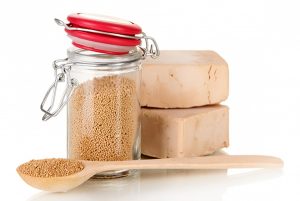 Among the huge number of recommendations on how to prepare top dressing for tomatoes from yeast, there are several options that have proven effective in practice.
Among the huge number of recommendations on how to prepare top dressing for tomatoes from yeast, there are several options that have proven effective in practice.
Classic option
Ingredients:
- live yeast - 1 kg;
- water - 5 l.
We heat water to 30-35 degrees, we plant in it a pack of fungi. Insist the solution for 24 hours.
Important!
During the fermentation process, the volume of the solution may increase by 2.5 times. This should be borne in mind when selecting the container for the mixture.
The present solution is diluted in 10 liters of warm water. This liquid can already fertilize seedlings. Consumption of the resulting product: a ten-liter bucket plus 0.5 liters of fungal mixture - for a couple of bushes. Thus, the infusion is enough for two dozen plants.
With sugar
Ingredients:
- yeast - 10 g;
- granulated sugar - 15 g;
- water (temperature 30 degrees) - 10 liters.
We mix all the ingredients and bring the container to a sunny place. After three hours, the fertilizer base is ready. Dissolve it in a five-liter bucket of warm water and process the bed.
With milk
Ingredients:
- live yeast - 1 kg;
- cow's milk - 5 l.
We heat milk to 35 degrees, we plant in it useful fungi. After two hours, dissolve the resulting liquid in 10 liters of warm water. Top dressing is ready to use.
Important!
In order for the mixture to reach the root system unhindered, the soil must be wet to the touch, but not wet.
With hops
- yeast - 15 g;
- hop cones - 1 cup;
- water - 1 l;
- wheat flour - 50 g;
- granulated sugar - 50 g;
- potatoes - 3 medium pieces.
Bring water to a boil, add hops and keep on low heat for 60 minutes. After the solution has cooled to 30 degrees, add a fungal stick, sugar and flour. We leave to wander on the sunny side of the window a couple of days. We skip the potatoes through a meat grinder, mix it in liquid and leave for another 24 hours.
Bred infusion in a 10-liter bucket of warm water.
With chicken droppings
Ingredients:
- yeast - 10 g;
- extract from chicken droppings - 0.5 l;
- granulated sugar - 250 g;
- ash - 0.5 l;
- water - 1 l.
The basis for feeding (all the indicated ingredients) is diluted in heated water and left in the sun for 3 hours. Fermented liquid is sent to a 10-liter bucket of warm water. Since the composition of the additive includes bird droppings, it can not shed the base of the stem of the plant. You can only moisten the grooves between the tomatoes.
Composting yeast
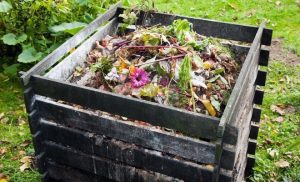 The fungal stick speeds up the process of composting. Organic with this element decomposes faster. Let me remind you that mowed grass, young weeds, manure and ash can be used as a basis for compost. If to this composition add unclaimed vegetables or fruits, as well as the remnants of flour products, the nitrogen content at the output will increase significantly. If priority is given to straw, sawdust and pieces of wood, the fertilizer will be more carbonaceous.
The fungal stick speeds up the process of composting. Organic with this element decomposes faster. Let me remind you that mowed grass, young weeds, manure and ash can be used as a basis for compost. If to this composition add unclaimed vegetables or fruits, as well as the remnants of flour products, the nitrogen content at the output will increase significantly. If priority is given to straw, sawdust and pieces of wood, the fertilizer will be more carbonaceous.
This addition to feeding tomatoes can speed up the process of compost readiness.
Ingredients:
- yeast - 30 g;
- sugar - 250 g,
- water - 1 l.
In a half meter jar, pour the heated water, pour in the yeast and sugar. We spend a couple of hours on the fermentation process and pour it into a compost pile. To get the liquid into the deeper layers of the herbal mixture, we pierce the holes with a stick and send the prepared product there. Starting to multiply, fungi accelerate the maturation of the compost, increasing the temperature inside the grass mixture.
Fertilizer is used 10 months after the start of the fermented mixture. The soil in which compost is applied is saturated with vitamins and microelements. It becomes fluffy and readily available for oxygen, and also retains the moisture necessary for tomatoes.
Errors and consequences
 The saying "everything is good in moderation" is fully suited to the use of yeast sticks for tomatoes. Rapid and noticeable growth of the root system has a downside.
The saying "everything is good in moderation" is fully suited to the use of yeast sticks for tomatoes. Rapid and noticeable growth of the root system has a downside.
In case of violation of the norms and one-time application of a large amount of yeast fungi to the soil, there is a danger of eventually getting almost dead land, on which cultivation of garden crops will be more than problematic. The surface layer of the soil will be poor in nitrogen compounds, potassium and calcium.
Board!
It is recommended to pour wood ash after each yeast top dressing on the same area to maintain an acceptable level of calcium.
The second common mistake is too frequent use of such dressings. It should be clearly understood that fertilizing tomatoes more than three times per season, we exceed the nitrogen content much higher than the allowable rate in the roots of plants.
The consequence of this approach will be that tomato seedlings will produce lush and rich foliage, and the fruits will not be tied. All the power of culture will go into growth and compaction of green mass.
The third error concerns non-compliance with the temperature regime of water and soil. Fungi will not ferment and multiply in the solution, the temperature of which will be below 30 degrees.They also will not process organic matter in the garden, if the indicators of the soil does not exceed 15 degrees Celsius.

